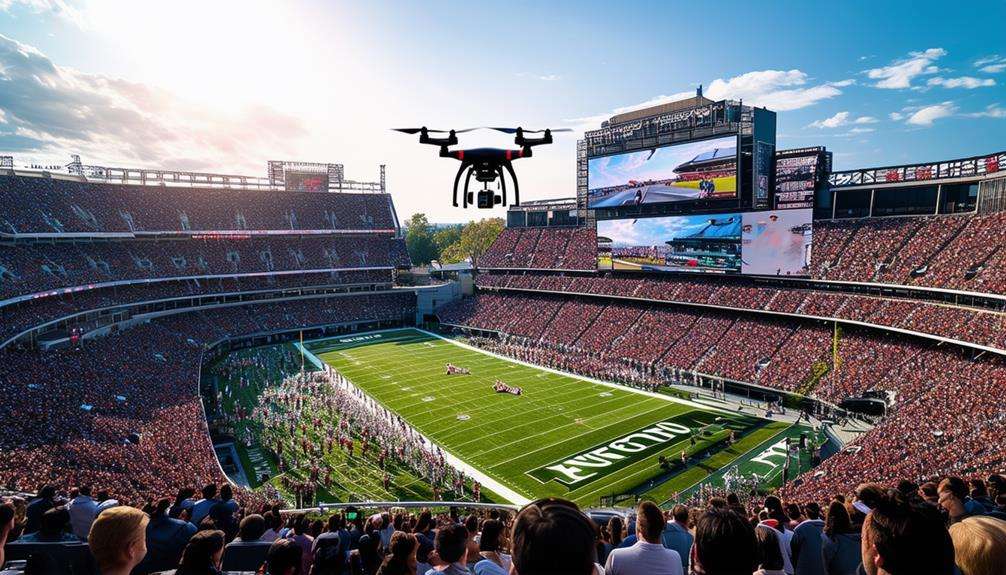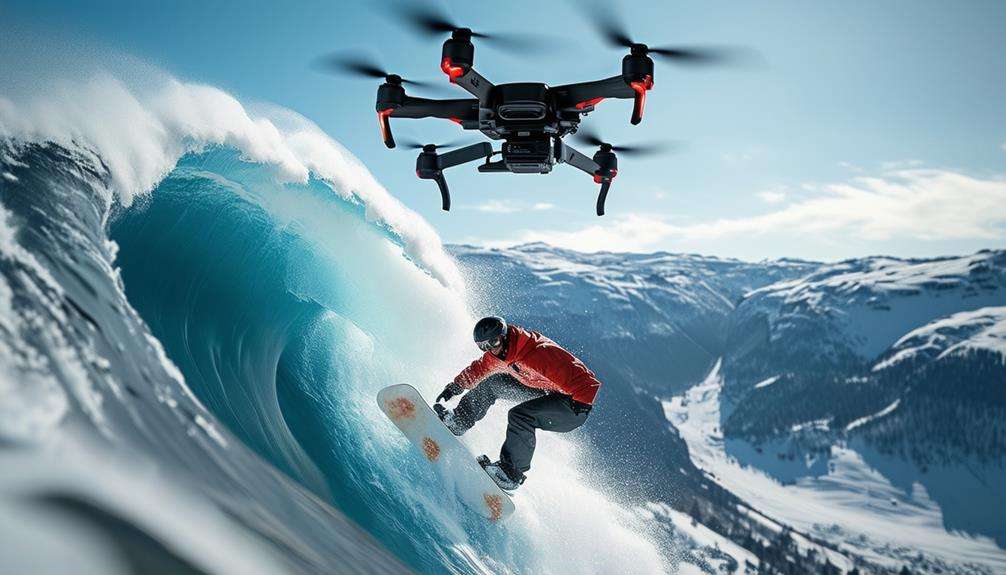Drones in Journalism: Reporting From the Sky
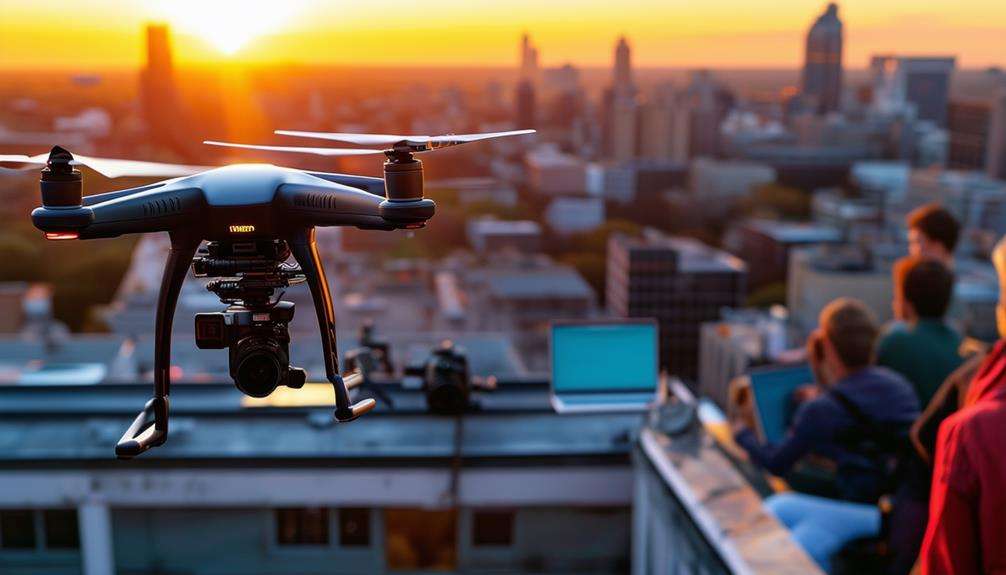
Imagine being a journalist with the ability to capture stunning aerial views that were once only possible with costly helicopter rentals. Drones have revolutionized news reporting, offering unique perspectives and dynamic visuals that captivate audiences.
However, these advancements bring significant ethical challenges—privacy, consent, and transparency are now critical issues. How do you navigate these complexities while utilizing this powerful storytelling tool? The implications are far-reaching and merit thoughtful consideration.
Evolution of Drone Technology
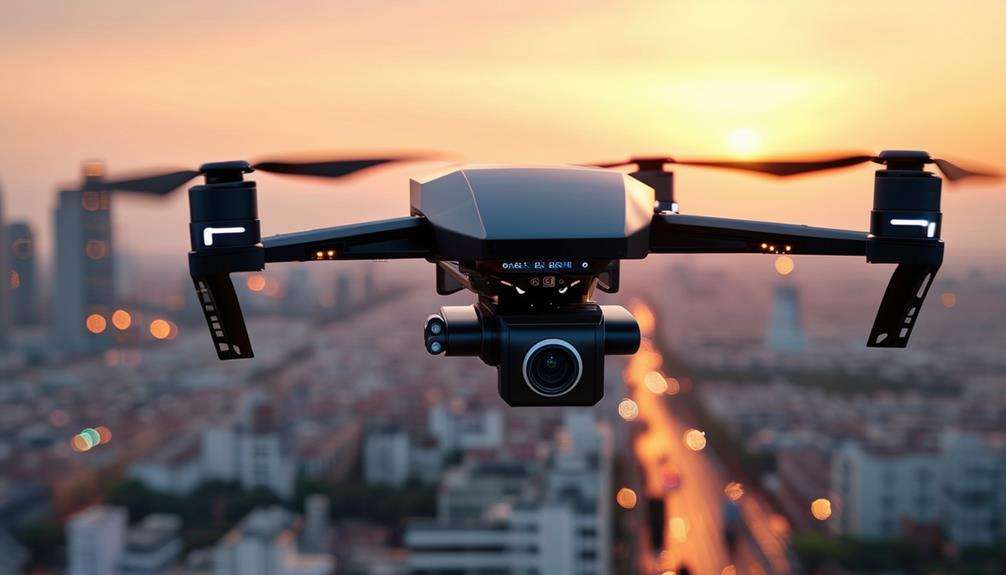
Drone technology has evolved rapidly, providing journalists with cost-effective and advanced tools for capturing aerial imagery. With drones, news organizations can achieve shots that were previously only possible with expensive plane or helicopter flights. For example, The New York Times has used drones to cover stories from natural disasters to large-scale protests, offering their audience a unique and comprehensive view of events.
Unmanned aerial vehicles (UAVs) have revolutionized the way journalists capture footage. This evolution in drone technology allows for the documentation of landscapes and the analysis of environmental changes with unprecedented ease. These high-tech tools enable journalists to gather data and visuals from previously inaccessible angles, enriching the depth and quality of news coverage.
Drone advancements continually improve, making them integral to modern journalism. The integration of 5G networks, for instance, aims to enhance data transmission speeds, allowing for quicker and more enriched content delivery. For journalists, using drones can significantly enhance storytelling by providing dynamic and visually compelling narratives.
Drones aren't merely tools but pivotal instruments in the ongoing evolution of journalism, transforming how stories are told and shared with the world.
Benefits for Journalists
Journalists benefit significantly from the use of drones, which offer unparalleled access to unique aerial perspectives that enhance storytelling. Drones enable the capture of dynamic visuals that would be otherwise impractical or prohibitively expensive to obtain. This is particularly advantageous for covering breaking news or reaching inaccessible areas. The aerial footage from drones adds depth and impact to news stories, making them more engaging for audiences.
One of the primary advantages of using drones is their cost-effectiveness compared to traditional methods like helicopters. This affordability allows news organizations to deploy drones more frequently and cover a broader range of stories. The drone journalism lab at the University of Missouri has been at the forefront of research and training in this field, showcasing the practical benefits and innovative applications of drone technology in journalism.
Key benefits include:
- Enhanced visual storytelling
- Safe access to hazardous locations
- Cost-effective alternative to helicopters
- Increased frequency of engaging content
These advantages demonstrate the significant value drones bring to modern journalism, enabling more comprehensive and captivating news coverage.
Ethical Considerations
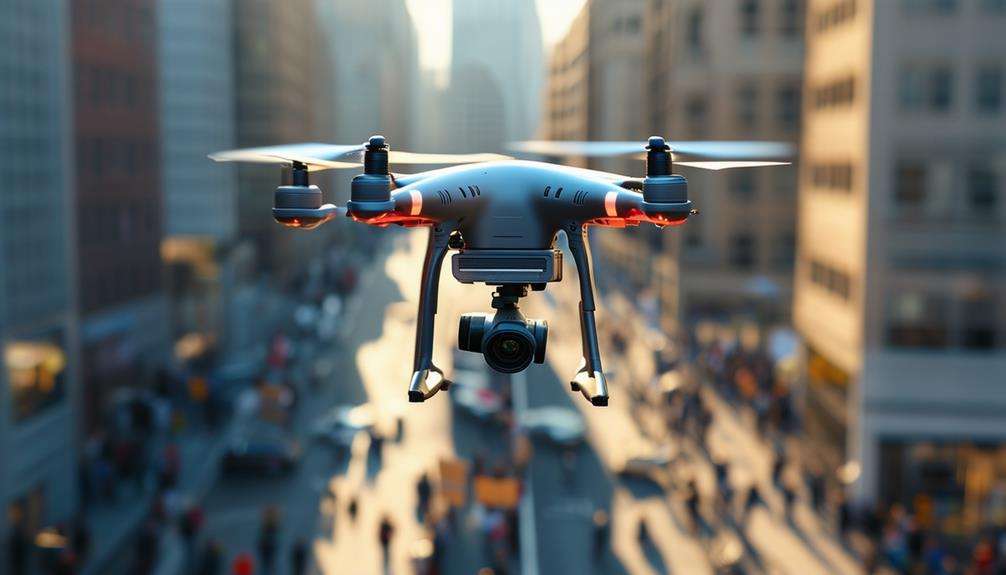
Exploring the ethical landscape of drone journalism requires careful consideration of privacy, consent, and respect for individuals' rights. As a drone journalist, you must navigate journalism ethics to ensure your reporting remains responsible and respectful.
Privacy concerns are paramount; you need to be mindful of individuals' private spaces and avoid unnecessary intrusion. Ethical guidelines demand transparency about your drone usage, making sure that your activities are clear to those being filmed.
Obtaining consent is another critical element. Always seek permission where possible, especially in sensitive areas or situations. Responsible reporting involves not just capturing footage but also minimizing harm. This means balancing the public interest with the potential impact on those being filmed. You should be particularly vigilant about avoiding bias and ensuring the accuracy of your footage. Transparency and ethical guidelines help maintain public trust. By adhering to these principles, you demonstrate a commitment to ethical journalism.
Case Studies
To demonstrate the profound impact of drone technology in journalism, let's explore some compelling case studies from major news organizations. The New York Times utilized drones to capture aerial footage of wildfires in California, providing unique perspectives on the devastation. This illustrates how mastering drone operation can significantly enhance news coverage.
Similarly, the BBC employed drones to document the effects of climate change in the Arctic, showcasing melting ice caps and environmental changes through stunning visuals. National Geographic used drones to film wildlife migrations in Africa, offering viewers a bird's-eye view of animals on the move. This highlights the potential of drones in delivering unparalleled visuals in commercial contexts. CNN leveraged drones to cover the aftermath of natural disasters like hurricanes, providing real-time visuals of affected areas.
Key considerations for effective drone use in journalism include:
- Mastering drone operation: Essential for capturing high-quality footage.
- FAA regulations: Must be adhered to for safe and legal drone use.
- Code of Ethics: Ensures responsible and ethical drone usage.
- Educational programs: Institutions like the University of Nebraska-Lincoln are training future journalists in drone technology.
These case studies demonstrate that the enriched storytelling capabilities offered by drones benefit hundreds of thousands of people, making them an invaluable tool in modern journalism.
Future Prospects
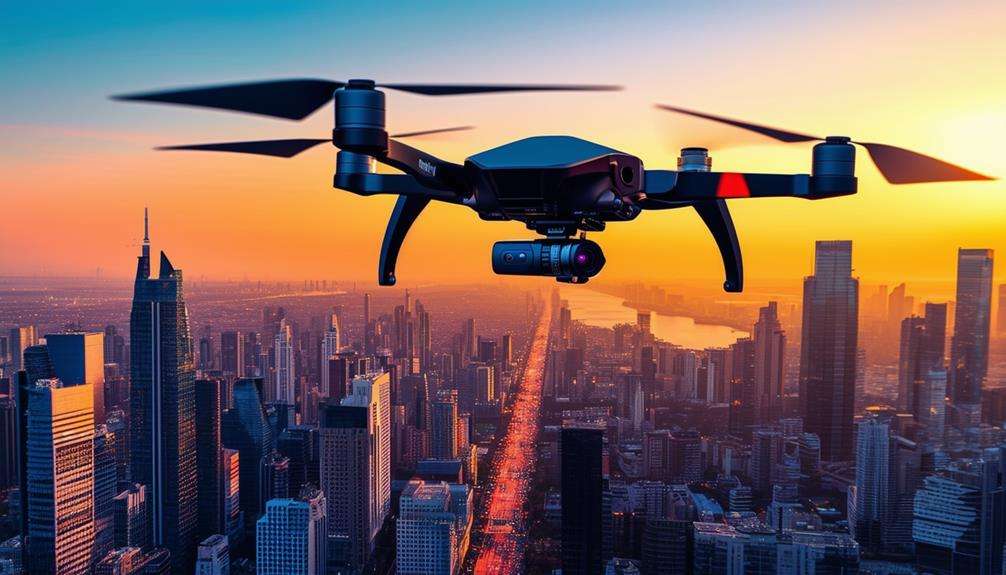
As drone technology continues to evolve, the future of journalism promises more dynamic and immediate storytelling capabilities. Unmanned aerial vehicles (UAVs) enable journalists to capture unique perspectives and cover previously inaccessible stories. With the advent of 5G networks, faster data transmission will revolutionize news reporting, allowing for high-quality, real-time content that enriches visual storytelling and keeps audiences engaged.
Missouri's drone journalism program is at the forefront of these advancements, providing a model for how educational institutions can prepare journalists for the future. The integration of 5G networks with drone technology will enable newsrooms to deploy drones more effectively during breaking news events, ensuring rapid and comprehensive coverage.
However, embracing these advancements comes with challenges. Legal considerations, such as adhering to the First Amendment and ensuring Freedom of the Press, must be balanced with the ethical use of drones. By mastering these new tools and overcoming technical hurdles, journalists can stay ahead in the fast-evolving world of news reporting. Whether using a drone for covering natural disasters or political rallies, the future holds exciting possibilities for pioneering journalism.
Conclusion
Integrating drones into journalism provides groundbreaking tools that revolutionize reporting. Drones offer unique perspectives and dynamic visuals, making stories more engaging and impactful.
However, ethical concerns such as privacy, consent, and transparency must be navigated carefully. With responsible use, drones can significantly enhance reporting. As technology advances, the future of drone journalism holds even more exciting possibilities for journalists and their audiences.


